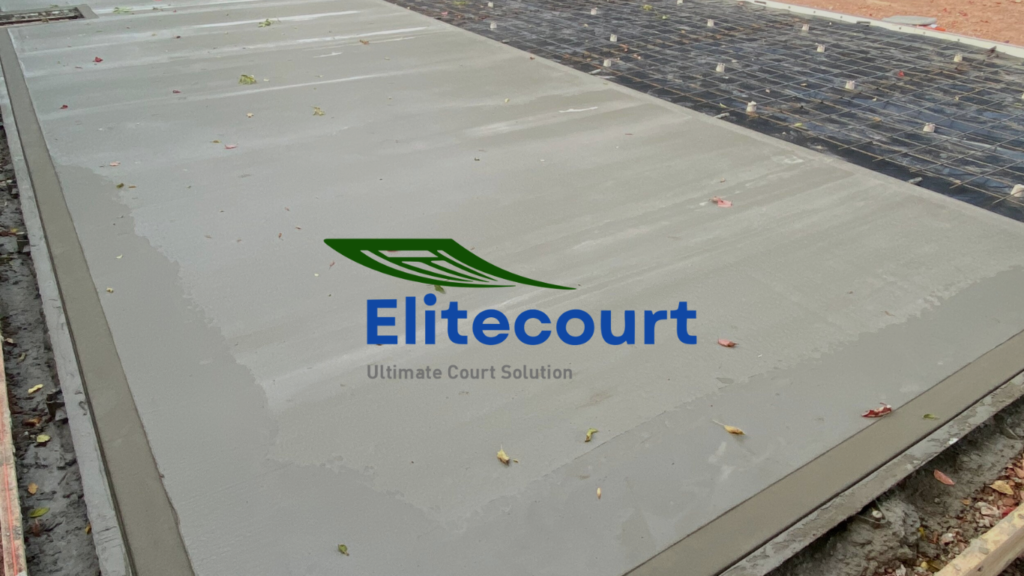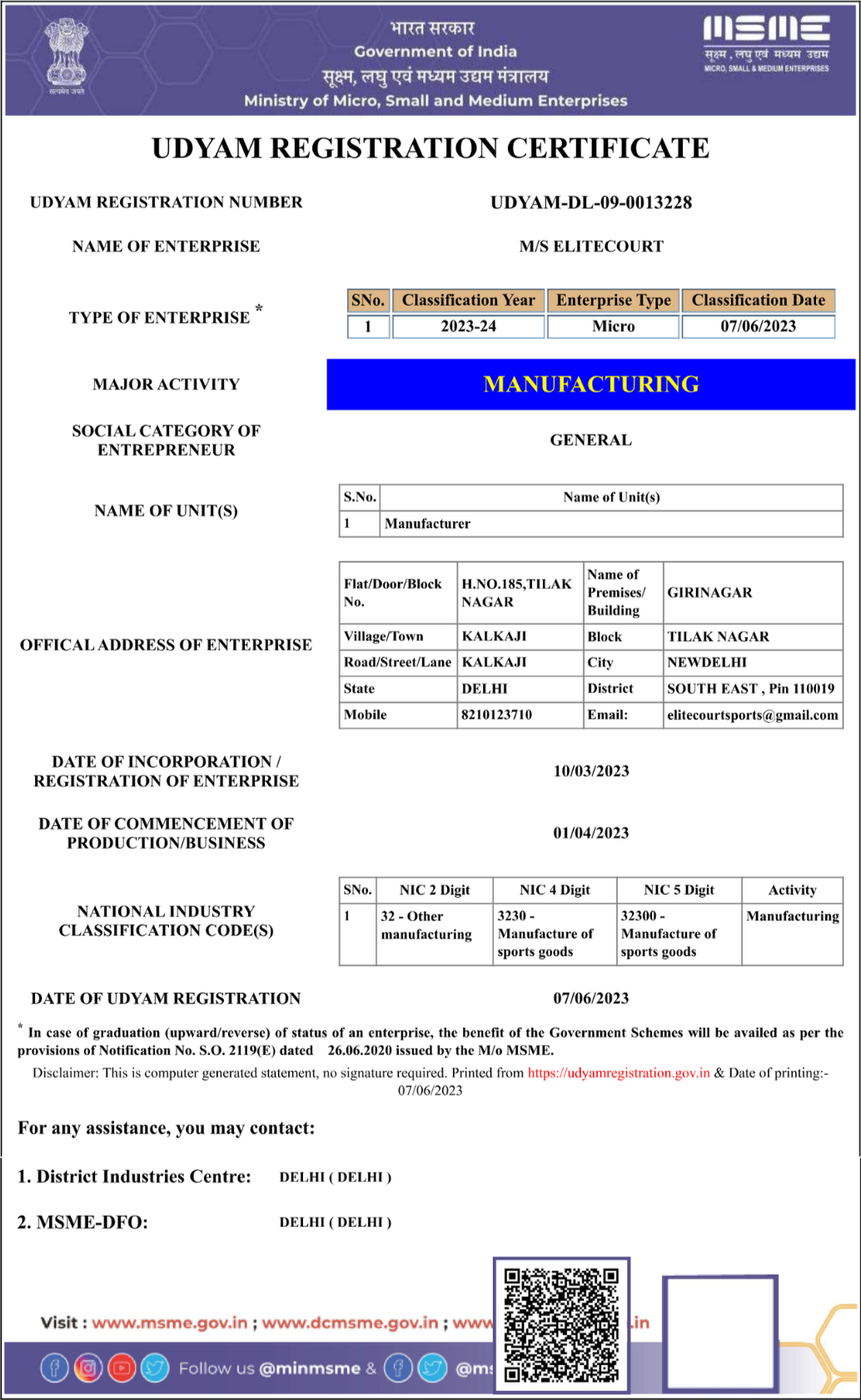Key Points to Consider Before Installing a Concrete Base for Acrylic Sports Flooring

Table of Contents
Installing a concrete base court is a significant investment, whether it’s for basketball court flooring, tennis court flooring , or any other sport. A concrete base provides a durable and stable foundation, but getting it right requires careful planning and consideration. This guide walks you through the key measures and considerations to ensure a successful concrete court installation.
- Site Assessment and Preparation
Evaluating the Location
Before any installation begins, a thorough site assessment is crucial. Consider factors such as soil stability, drainage, and proximity to existing structures. Ensure the site is level and free of debris to provide a solid foundation for the concrete.
Site Preparation
Proper preparation of the site involves clearing the area, grading the ground, and setting up proper drainage systems. Effective drainage is essential to prevent water accumulation, which can undermine the concrete over time.

- Concrete Quality and Mix
Choosing the Right Concrete Mix
The quality of the concrete mix directly impacts the durability and performance of your court. Opt for a high-strength concrete mix that can withstand heavy use and environmental conditions.
Incorporating Reinforcements
Reinforcing the concrete with steel rebar or wire mesh helps prevent cracking and improves overall strength. Proper reinforcement ensures that the court can handle impacts and stress without significant damage.
- Design and Layout
Court Dimensions and Markings
Determine the dimensions of the court according to the sport being played. For example, a standard basketball court is 94 feet by 50 feet, while a tennis court is 78 feet by 36 feet. Accurate layout and markings are essential for proper gameplay.
Surface Slope and Drainage
Ensure the court has a slight slope for effective water drainage. A slope of 1-2% is typically sufficient to guide water away from the playing surface and prevent pooling.
- Installation Process
Formwork and Framework
Setting up formwork is crucial for defining the shape and dimensions of the court. Use sturdy materials to create a framework that will hold the concrete in place during pouring and curing.
Concrete Pouring and Finishing
Pour the concrete evenly and work quickly to avoid uneven surfaces. Use tools like screeds and trowels to level and smooth the surface. Proper finishing is vital for achieving a smooth, playable surface.
- Curing and Maintenance
Curing the Concrete
Allow the concrete to cure properly to achieve maximum strength and durability. Curing typically takes about 7 days, during which the surface should be kept moist to prevent cracking. Avoid using the court during this period to ensure the best results.
Ongoing Maintenance
Once the court is installed, regular maintenance is required to keep it in top condition. This includes cleaning the surface, repairing any cracks promptly, and applying sealers to protect the concrete from weathering and staining.
- Safety Considerations
Slip Resistance
Ensure the surface is textured to provide adequate grip and prevent slips and falls. This is particularly important for sports courts, where quick movements and changes in direction are common.
Edge and Corner Safety
Pay attention to the edges and corners of the court. Rounded edges and smooth transitions can help prevent injuries and create a safer playing environment.
- Cost Considerations
Budgeting for Installation
Concrete base court installation involves various costs, including materials, labor, and site preparation. Create a detailed budget that accounts for all these factors to avoid unexpected expenses.
Long-term Value
While the initial investment in a concrete base court can be significant, it offers long-term value due to its durability and low maintenance requirements. Weigh the initial costs against the long-term benefits when planning your budget.
- Choosing the Right Contractor
Experience and Expertise
Select a contractor with experience in installing concrete sports courts. Check their portfolio and references to ensure they have a proven track record of successful projects.
Getting Quotes and Contracts
Obtain detailed quotes from multiple contractors and compare them based on the scope of work, materials used, and timelines. Ensure that you have a clear contract that outlines all aspects of the project, including costs, timelines, and warranties.
Conclusion
Installing a concrete base court involves several critical considerations, from site assessment and concrete quality to design, installation, and ongoing maintenance. By understanding these key measures, you can ensure that your concrete court meets the highest standards of durability, performance, and safety. Proper planning and execution will result in a high-quality playing surface that provides years of enjoyment and reliability.
FAQs
- How long does it take for concrete to cure properly?
Concrete typically takes about 7 days to cure fully, though it can take up to 28 days to reach its maximum strength.
- What is the ideal thickness for a concrete sports court?
A thickness of 4 to 6 inches is generally recommended for concrete sports courts, depending on the expected load and usage.
- Can I install a concrete court over an existing surface?
Yes, but the existing surface must be properly prepared and in good condition. Uneven or damaged surfaces may require additional preparation or removal.
- How do I prevent cracks in my concrete court?
Proper reinforcement, quality concrete mix, and adequate curing are essential to minimize the risk of cracks. Regular maintenance and prompt repairs also help prevent further damage.
- Are there any eco-friendly options for concrete court installation?
Yes, using recycled materials, low-emission concrete mixes, and environmentally friendly sealers can make the installation process more sustainable.








